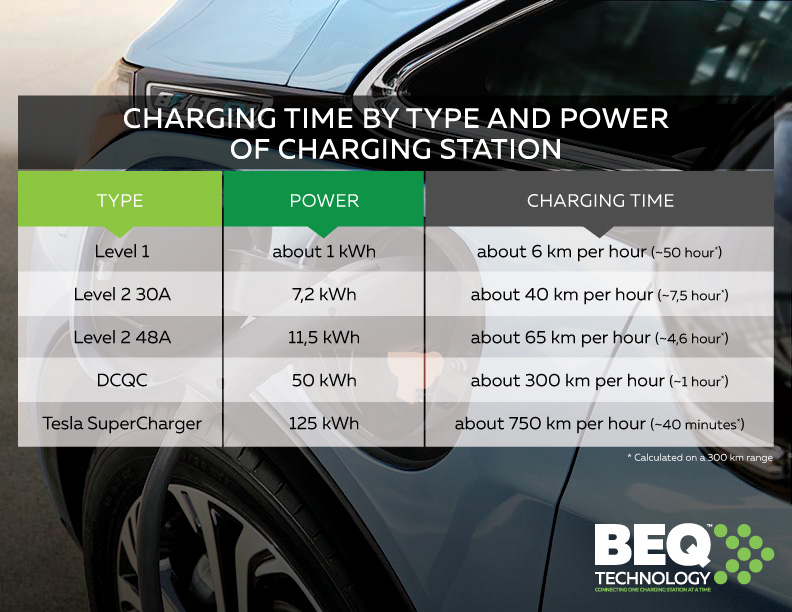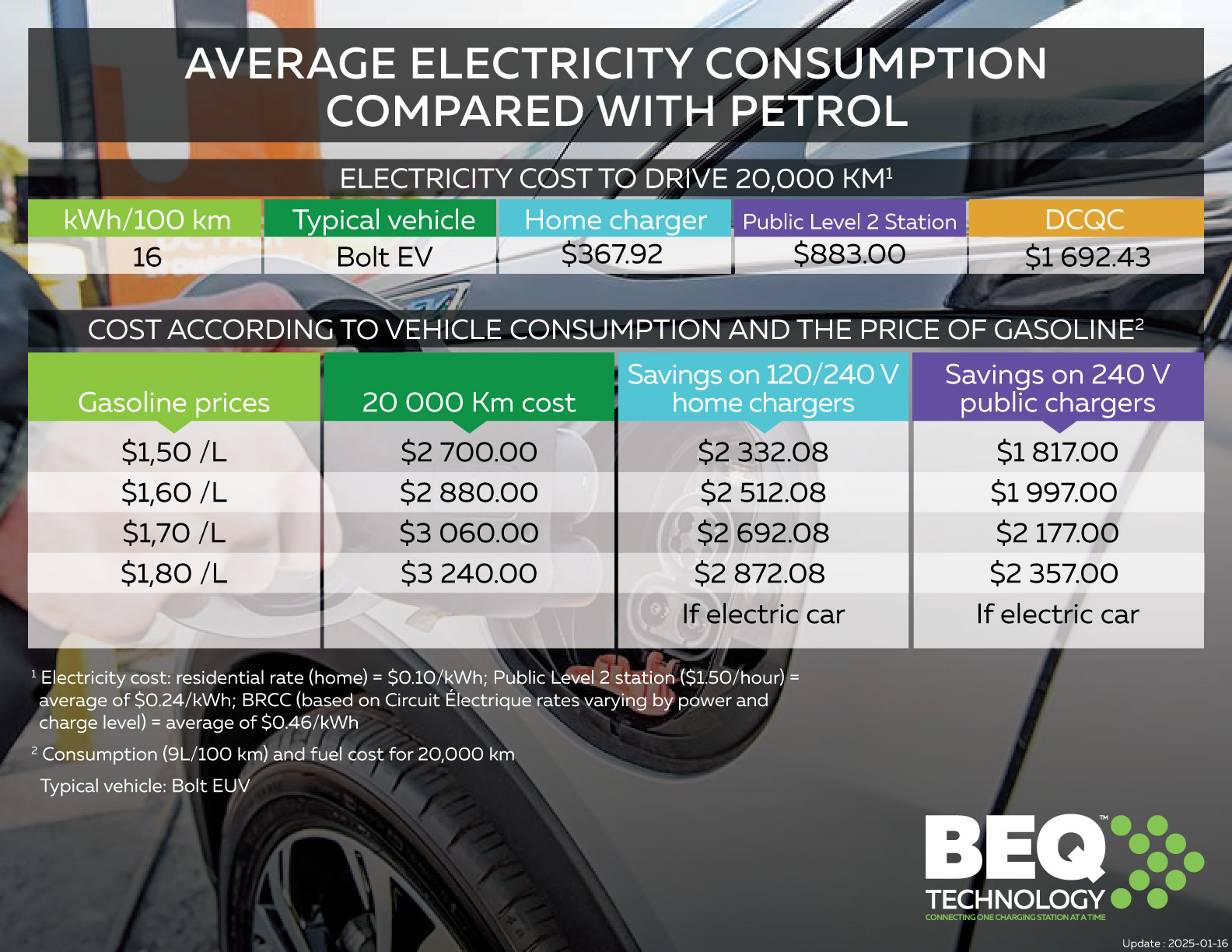General questions about charging stations
Yes, all charging stations offered by BEQ Technology, except for Tesla charging stations, have an SAE J1772 connector that is compatible with all electric and plug-in hybrid vehicles sold in North America.
We have charging stations available with a NEMA 14-50 plug, which is the same as the one used for a stove, but not for a dryer because its NEMA 14-30 plug is not powerful enough to meet safety standards. Therefore, we offer the possibility of connection to a stove or welder outlet which meet our quality and safety requirements.

A level 2 charging station (240V) will be much more efficient for charging as it is 5 to 6 times faster than a level 1 charging station (120V).
Level 1 charging station: The Level 1 charging station is the one that comes with the car, commonly referred to as 120V charging. This station is used for emergency charging as it is slow. It can be used when there are no other connection possibilities. This station will provide an average of 6 km of range per hour of charging.
Level 2 charging station: The Level 2 charging station, also known as a 240V station, is the station to get for home use. It is much faster than the Level 1 station and will charge the car in only 3 to 9 hours depending on the size of the battery. It also allows preheating of the car in cold weather without depleting the car's battery. Additionally, good preheating will slightly increase the car's range. It is therefore very interesting to get a Level 2 station in colder climates. This station will provide an average of 30-55 km of range per hour of charging, depending on its power and the charger capacity of your car.
Level 3 charging station: The Level 3 charging station, also known as a rapid or DC fast-charging station, is often found in shopping center parking lots or along highways to allow electric vehicle owners to make partial charges to have enough range to complete their trips. However, it is important to be careful because these fast-charging stations tend to have a greater impact on the battery's health by reducing its maximum charging capacity when used too frequently. It is also recommended to stop charging when you reach 80%, as from this point, the Level 2 station becomes almost as fast, and it becomes less expensive to complete the charge on a Level 2 station than on a Level 3 fast-charging station.

Which car do you want to charge? Not all cars are equal in terms of battery capacity, but also in terms of their onboard charger. Depending on the manufacturer and the battery capacity, the onboard chargers indicate the maximum charging capacity which, even if you try to charge at a higher power, will be useless. For example, the onboard charger of a Volt is 3.6 kWh (15A), a Leaf is 6.6 kWh (27.5A), a Bolt is 7.2 kWh (30A), a Tesla is 9.6 kWh (40A base). The charging speed will always be the lowest between the capacity of the charging station or the onboard charger.
Do you have a garage? Do you park your car outside in the summer but inside in the winter? Do you have a cottage? If you answered YES to any of these questions, a portable charging station would be a definite advantage for you. As the name suggests, a portable charging station will allow you to bring your charger to your cottage without having to purchase a second one... just unplug it from the wall and head out for the weekend! You just need to have a second outlet installed for the charger at the cottage. You can ask an electrician to install a 240V electrical outlet where the charger will be located. Portable charging stations also come with a place to put a lock to prevent theft. In case of malfunction, these charging stations are also easier to replace in order to benefit from the manufacturer's warranty.

